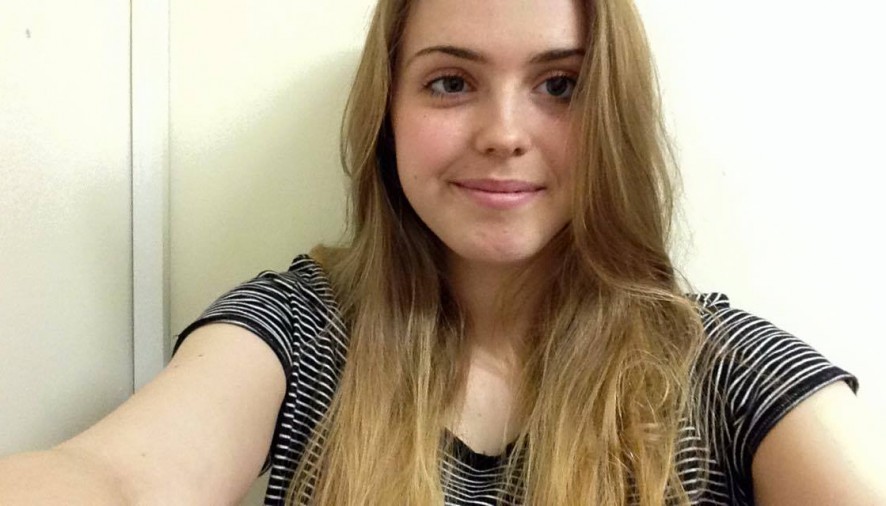Anorexia. Even typing the hatred word makes me shiver- never mind saying it. Memories of weekend trips to the eating disorders clinic to visit my best friend come flooding back. I was on daily duty to clock her eating habits to her mum, repeatedly reporting that she ate one cherry tomato for lunch at school. I remember a sleepover we had 6 months before she was emitted, where I, and another friend, sat on the kitchen floor for the entirety of the night, desperately trying to make our friend take one, harmless (to us) bite of a fish finger. This was not how a sleepover should be. It was not a way of life- for her, or for her loved ones. I felt helpless. Helpless is the word. No one had control. Anorexia had control. It was beyond difficult and excruciatingly painful to witness my best friend of 7 years starve herself to death.
Growing up, the word ‘anorexia’ floats around society. I’m sure we are all guilty, myself included, of wrongfully labelling a fellow class mate ‘anorexic’ purely because they were slimly built.However, it was not until I watched my friend battle with anorexia, that I realised anorexia nervosa is not a way of defining how someone looks. It is not a weight, or an appearance, it is in fact a highly dangerous mental illness. Yes, of course, weight plays a dominant role in the condition, but, weight loss is a side effect of anorexia. Someone can be overweight, and still be anorexic, still suffer from demonising anorexic thoughts. Anorexia nervosa is one of the deathliest psychiatric disorders across the world, with a staggering 1 in 5 sufferers dying if left untreated.
To somebody who has a healthy relationship with food, it may seem incomprehensible as to why someone would purposely starve themselves and enter into the viscous, self- destructive cycle, known as anorexia nervosa. Sure, there may be a genetic pre-disposition to this illness, or, perhaps it stems from a subconscious need for control, but it appears highly likely that the rise in social media use over the last 30 odd years has had a devastatingly large impact on the number of cases reported. Since 2011, social networking has increased by 21%, and likewise, hospital emissions for severe eating disorder cases has increased by 16%. Coincidence? I think not.
Biology loads the gun and society pulls the trigger.
With social media sites, such as Instagram and Tumblr, opening up a world of ideals and expectations, bombarding us with images of half-naked males and females, we are presentedwith what societyhas labelled ‘’body goals’’. For men, this typically depicts a lean, muscular build and for women, a slim, toned (yet somehow curvaceous) body. Simply impossible if you ask me. Even now, scrolling down my Instagram feed, I see comments on Cheryl Cole’s post of her in a bikini by little girls, who tragically look about 11 in their display pictures, saying ‘’let’s plan a diet and get this bod’’, and another, ‘’coming back to this today for #thinspiration’’. The use of hashtags, such as this, and endless accounts, with names such as ‘’femalemotivation’’, further construct this ideal body image, allowing teens (and of course, adults) to become obsessed with how they believe they should look, according to societal standards of beauty.
Pro-ana (short for anorexia) websites have been a critical cause of anorexia cases- the development, as well as maintenance. Theyencourage weight loss and promote the anorexic lifestyle, displaying endless, and most probably excessively edited, images of skeletal, gaunt, and most importantly ill-looking bodies. These websites are fatal and I am horrified that they have not yet been blocked online. The damage they cause is deplorably unjustifiable.
It is not all bad news though. Charities, such as BEAT, have been campaigning to bring about awareness to eating disorders since 1989, successfully offering a platform for support and advice.The French government has recently passed a bill decreeing that models must possess a medical certificate deeming them fit to work, in a bid to prevent the use of “excessively thin” models. The bill also requires that digitally altered images – in particular those which make a model’s silhouette “narrower or wider” – be labelled “touched up”. This is a step towards making advertising and social media a safer space, educating the vulnerable youth that a healthy, happy body is perhaps one to aspire to instead, through a balanced diet and moderate exercise.
I can’t express enough how important it is to be aware. Eating disorders on the whole, including bulimia, affect 1 in 4 college aged students. A shocking statistic, that needs to change. By being vigilant to abnormal eating behaviours, such as, hiding food in napkins, knuckle scars from purging, trying to pass off having previously eaten in order to avoid meals, is vital in recognition and accessing early treatment. Unfortunately, doctors will not diagnose anorexia nervosa until a certain percentage of weight has already been lost, which is counterproductive, and means the sufferer is not entitled to treatment to prevent onset, and is only put on waiting lists, once they have begun plunging down the slippery slope.
So, be aware and speak out. Don’t let someone you love become another harrowing statistic.
Dorrie Townend

